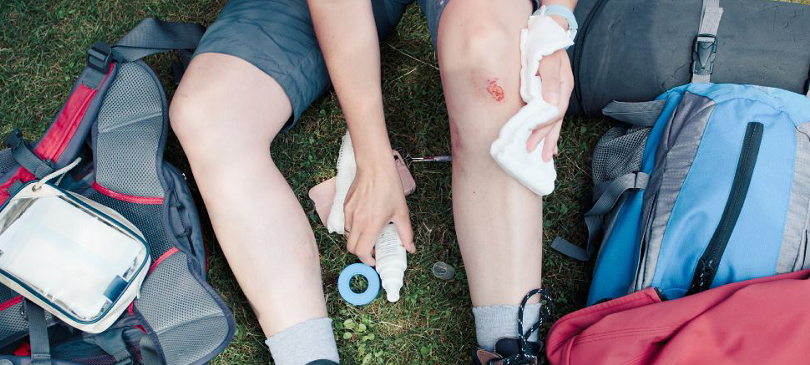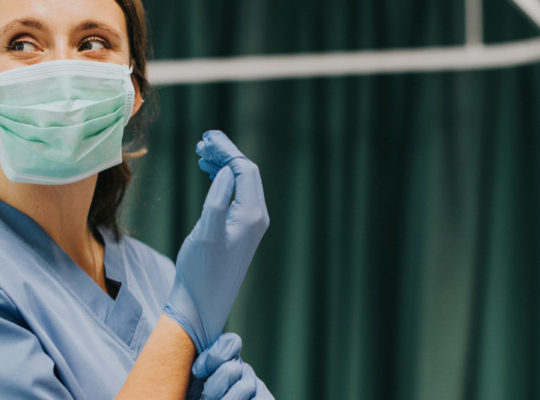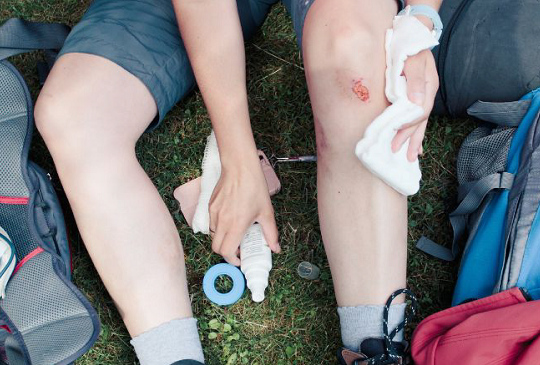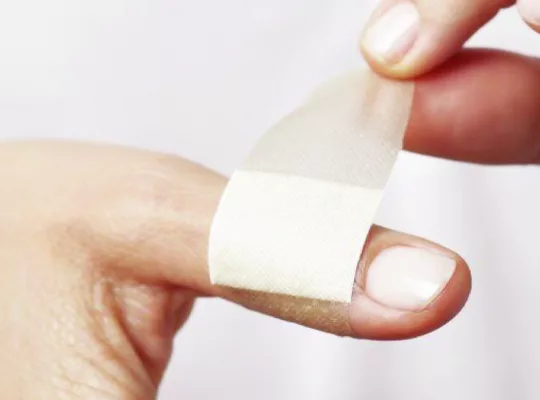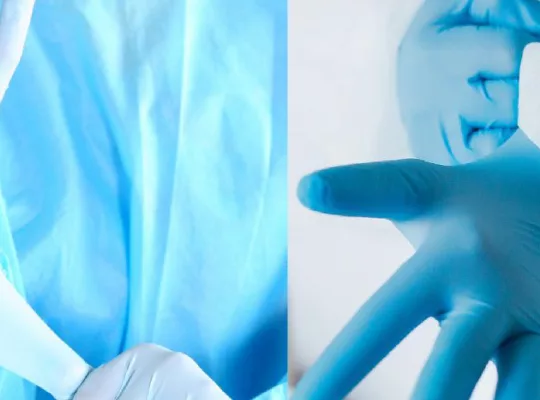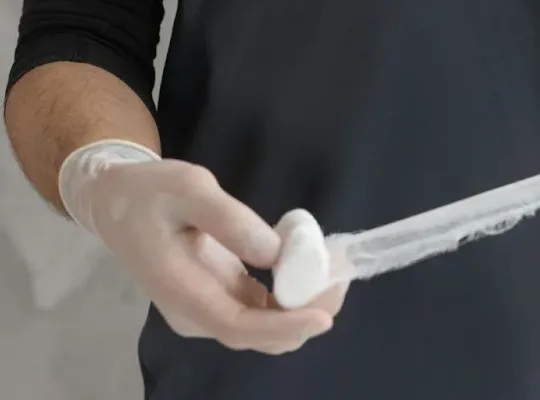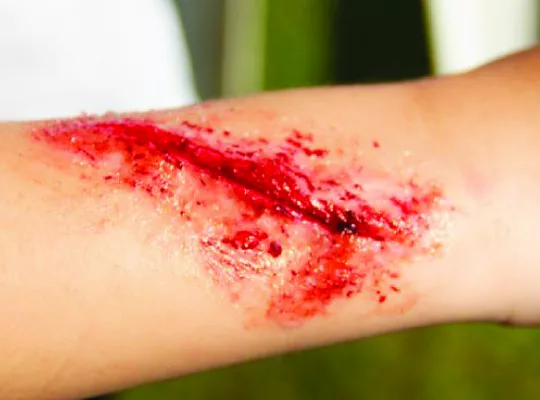In medicine, stitches, also called sutures, are vital components. Their primary purpose is to close wounds and assist the body’s healing process. The use of stitches was first commenced thousands of years ago. In those days, people in ancient civilizations performed simple repairs as best they could to recover from their injuries.
History
Sutures, the threads that close wounds or surgical incisions, have been used in medical history since ancient times. The earliest recorded use dates back to around 3500 BC in Egypt, primarily for mummification. Human tissue suturing evidence appeared around 1650 BC, with silk threads used by approximately 600 BC to stitch wounds.
Initially, natural materials like animal intestines and silk were used for sutures despite their challenges, including difficulty manipulating and maintaining position. By the early 1900s, nylon thread had replaced silk. It offered superior strength and durability, although it had posed sterilization challenges. This led to the development of synthetic materials. Polypropylene and polyester became standard in modern surgeries.
Advancements in the 19th century saw metallic sutures becoming common, thanks to metallurgy progress. Russian doctor Nikolay Pirogov revitalized suturing techniques in the early 1900s. He created innovative methods for treating gunshot wounds using wax-soaked cotton threads.
Nylon, invented in the early 20th century, gained popularity for its strength and flexibility, making it suitable for various applications, including sutures. Today, nylon sutures are preferred for their durability and effectiveness in diverse surgical procedures. Do stitches hurt when healing? To help the healing process, continuous innovations include:
- Crimped needles
- Barbed sutures
- Specialized meshes
Are Sutures and Stitches Different?
“Sutures” and “stitches” are often used interchangeably but have distinct meanings in medical practice. A suture refers to the thread or material used to close a wound, while stitching describes the technique doctors use to apply sutures and secure the wound.
Doctors carefully select the appropriate suture material for medical procedures and employ stitching techniques. They’re tailored to the wound’s:
- Location
- Size
- Depth
- Desired cosmetic outcome
Do stitches hurt when healing? This precision in choosing suitable materials and techniques is essential for effective wound healing and reducing risks like pain, infection, and scarring.
Types of Sutures
Suture materials are categorized based on their strand diameter, denoted by a grading system using the letter “O” preceded by a number. This scale indicates finer threads with higher numbers suited for delicate work. Each strand is affixed to a needle, which varies in size and may feature a cutting or non-cutting edge.
Larger needles can close more tissue per stitch, while smaller needles minimize scarring by creating more minor punctures. Various types of sutures and techniques are employed in medical procedures:
Continuous
This method utilizes a single strand of suture material and creates a stitch sequence. It efficiently distributes tension along the wound, ensuring robust closure.
Interrupted
This technique utilizes multiple strands of suture material, individually placed and tied off. Should one stitch fail, the others maintain the integrity of wound closure, providing reliable security.
Deep
Positioned beneath skin layers, these sutures can be either continuous or interrupted. They close deeper tissues, such as fascial layers, offering structural support.
Buried
These are designed to keep the knot inside the closed tissue area, making them suitable for deeper wounds where removal may be challenging. They are typically left in place.
Purse-String
This continuous technique encircles and tightens around an area like a drawstring closure. It’s commonly used in surgeries such as intestinal procedures to secure devices like staplers.
Subcutaneous
Placed within the dermis layer beneath the skin’s surface, these short stitches run parallel to the wound and are anchored at both ends. They help align wound edges for proper healing and reduce scarring.
Healing Process
The healing process after getting stitches involves several essential steps to ensure proper recovery. Initially, keeping the stitched area dry is crucial to prevent infection. Applying antibiotic ointment and changing dressings regularly can help keep the wound clean and facilitate healing. Elevating the injured area above heart level for the first 24-48 hours to reduce swelling and promote healing is also beneficial.
Stitches typically remain in place for about two weeks. However, this duration may vary depending on the wound’s location and severity. For example, facial stitches may be removed as early as three to five days to minimize scarring.
In contrast, stitches over joints or areas prone to movement require two weeks for optimal healing. Some types of sutures are designed to dissolve once the healing process is complete.
When it’s time for removal, the process is straightforward. Each suture has a knot on the skin’s surface, allowing healthcare providers to lift the suture tails at the knot gently, cut the suture loop, and remove the ends painlessly.
After the stitches are removed, caring for the scar is crucial for its long-term appearance. Protecting the scar from bumps and stress is advisable, especially over joints where wounds can quickly reopen. Using sunscreen or protecting the scar from the sun helps prevent discoloration. Additionally, scar creams recommended by doctors can help minimize the scar’s visibility.
Risks Associated With Stitches
Getting stitches is typically straightforward first aid but carries certain risks. Cuts can become infected before or after closure, despite proper cleaning, and doctors may prescribe antibiotics for cuts in vulnerable areas such as the hands.
Potential risks include scarring and limited movement of the surrounding skin, which can cause discomfort and tightness. Keloids raised and bulging scars may develop and lead to itching and cosmetic concerns.
Internal stitches pose additional risks; if tissues fail to heal properly, they may separate, potentially causing complications like hernias. These internal issues can sometimes go unnoticed without medical attention.
Recognizing when to seek help is critical. For severe cuts, washing with mild soap and water is essential to prevent infection. If bleeding persists after 15 minutes of applying gentle pressure, immediate medical attention is necessary. Stitches may be needed for cuts more profound than a quarter-inch, those exposing fat, muscle, or bone, cuts near joints that open with movement, or those caused by dirty objects.
Contact a doctor if you notice signs of infection, such as redness, swelling, heat, pain, or discharge around the wound, or if a fever or red streaks develop. These symptoms require urgent evaluation and treatment.

